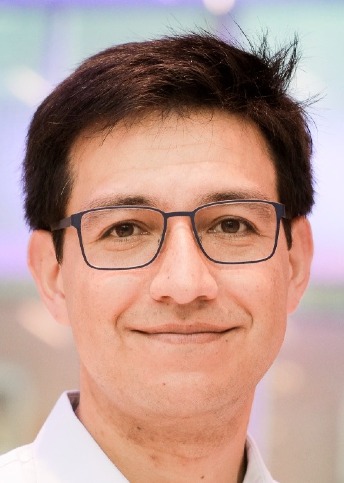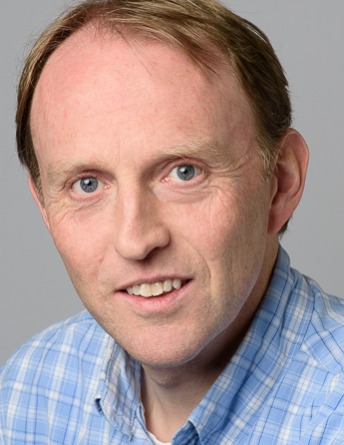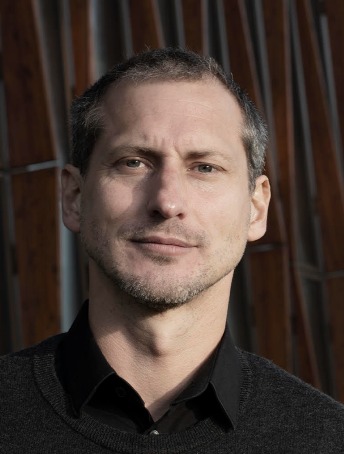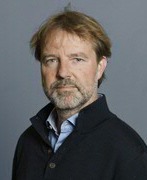NWO ENW-XL million grants for RUG research projects
Four projects for which RUG researchers are lead applicants have received ENW-XL million grants from the Netherlands Organization for Scientific Research (NWO). It concerns fundamental research within the Exact and Natural Sciences. Professors Jorge Pérez, Sybren Otto, Clemens Mayer and Patrick Onck will each receive about 3 million euros for their research projects, which contribute to a variety of issues: from future-proof software systems to designing new medicines.
Eight more FSE researchers are co-applicants in other ENW-XL awards. In total, NWO awarded 64 million euros to 21 projects. They share one common goal: to take a big step in curiosity-driven basic scientific research through collaboration.

Cyclic Structures in Programs and Proofs: New Harmonies of Theory and Praxis
Prof. dr. Jorge Pérez (Bernoulli Institute, Faculty of Science and Engineering)
Co-applicants: dr. H. (Henning) Basold, dr. R.J. (Robbert) Krebbers, dr. J.G.H. (Jesper) Cockx, dr. G. (Georgiana) Caltais, dr. H.H. (Helle Hvid) Hansen
From our phones and buildings to power and communication networks, software is the backbone of our digital society. Ensuring that software systems are reliable and resilient is crucial but challenging. A key aspect of verifying software is analysing cyclic structures in their behavior. However, the theoretical understanding of many important cyclic structures is still underdeveloped, creating a bottleneck for verification: many critical software systems essential to society cannot be verified. This consortium will significantly advance the theory of cyclic structures, providing a robust foundation for the future-proof construction of software systems that are reliable and resilient.

Approaching De-Novo Life
Prof. dr. Sybren Otto (Stratingh Institute for Chemistry, Faculty of Science and Engineering)
Co-applicants: prof. dr. S.J. (Siewert-Jan) Marrink, prof. dr. A.M. (Anouk) Rijs, dr. E. (Evan) Spruijt, prof. dr. E.M.J. (Sabeth) Verpoorte
The researchers aim to create, for the first time, a minimal form of life from synthetic molecules. They will take a system that is able to replicate (i.e. make copies of itself) and metabolize (construct its own components from material in its environment) and make it produce its own cell-like compartments. They will then make these systems grow and divide and undergo Darwinian evolution. The research involves a collaboration between experts in chemistry, microfluidics, mass spectrometry, computer simulations, and early evolution theory. This work touches on existential questions like: “Why is there life?” and “Why are we here?”

Machine learning & evolutie - een perfecte match voor het ontwerpen van nieuwe medicijnen en katalysatoren
Prof. dr. Clemens Mayer (Stratingh Institute for Chemistry, Faculty of Science and Engineering)
Co-applicants: dr. F. (Francesca) Grisoni, dr. R. (Robert) Pollice
Performing evolution in the test tube has proven effective to engineer tailor-made (bio)molecules that aid us in combating diseases and in realizing a sustainable economy. However, such directed evolution campaigns are slow and laborious, making the discovery of new drugs and catalysts arduous. Here, researchers will make use of cutting-edge machine learning approaches to guide directed evolution campaigns toward more effective drugs and catalysts. By melding state-of-theart techniques from molecular biology, chemistry, and machine learning, these efforts will pave the way for the out-of-the-box design of tailor-made and impactful biomolecules.

Holey trap – disordered proteins guard the gap
Prof. dr. ir. Patrick Onck (ZIAM, Faculty of Sience and Engineering)
Co-applicants: prof. dr. L.M. (Liesbeth) Veenhoff, prof. dr. C. (Cees) Dekker, dr. R. (Rifka) Vlijm
The transport proteins in cells are highly selective, transporting only those molecules that have precisely the right shape: structure determines function. Until recently the nuclear pore complex, a large transport system to access the cell nucleus, was the only exception to this. Its selectivity for transport arises from a unique filter system based on unstructured proteins. Now, recently, a second filter system has been found (in peroxisomes) that works similarly but at a drastically reduced complexity. In this research programme we combine biological, physical and chemical methods to use this exciting opportunity to uncover how these filters system actually work.
Read more
More news
-
19 December 2025
Mariano Méndez receives Argentine RAÍCES award
-
18 December 2025
Why innovate, and for whom?
-
17 December 2025
Ben Feringa wins Feynman Prize
